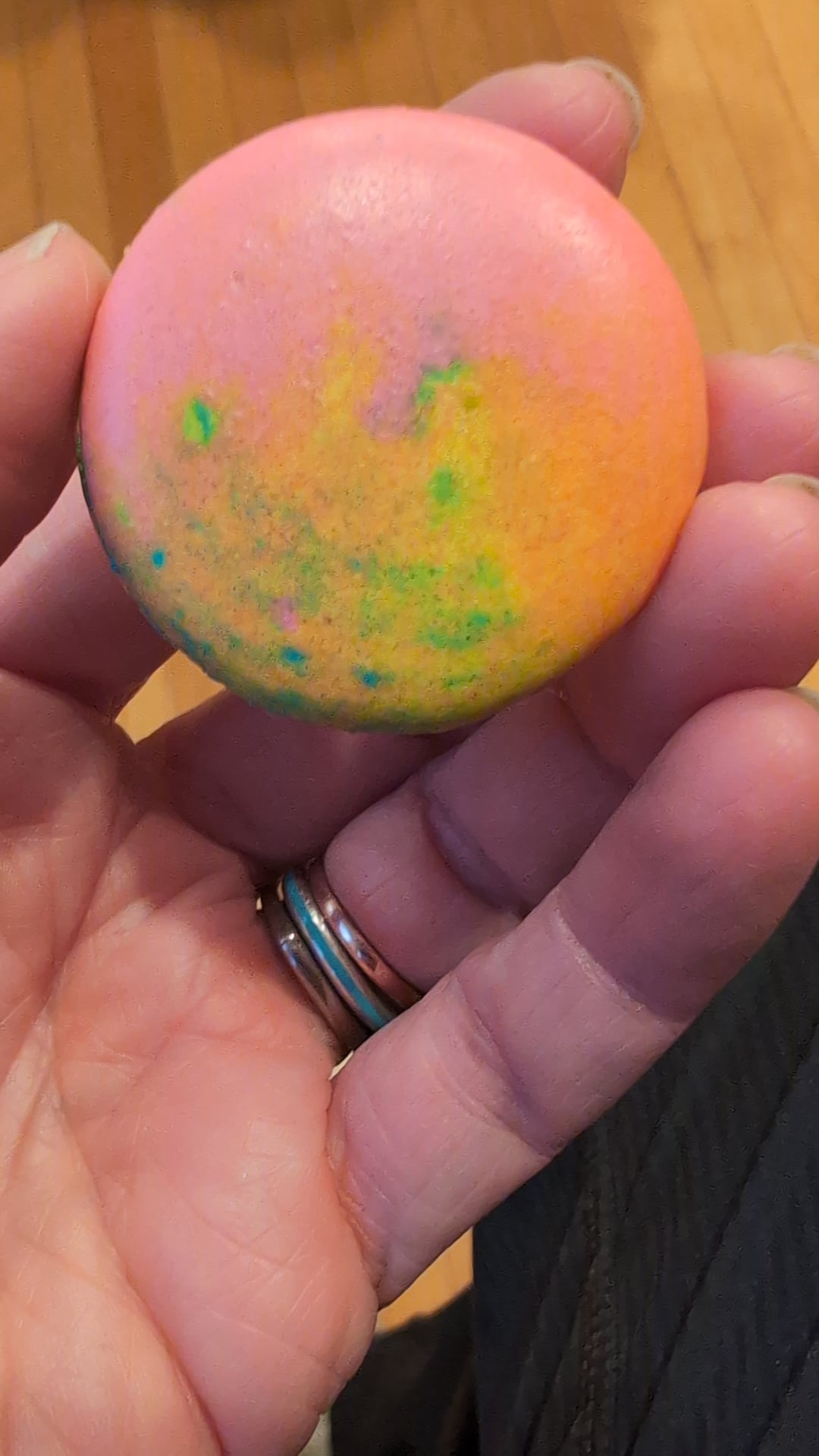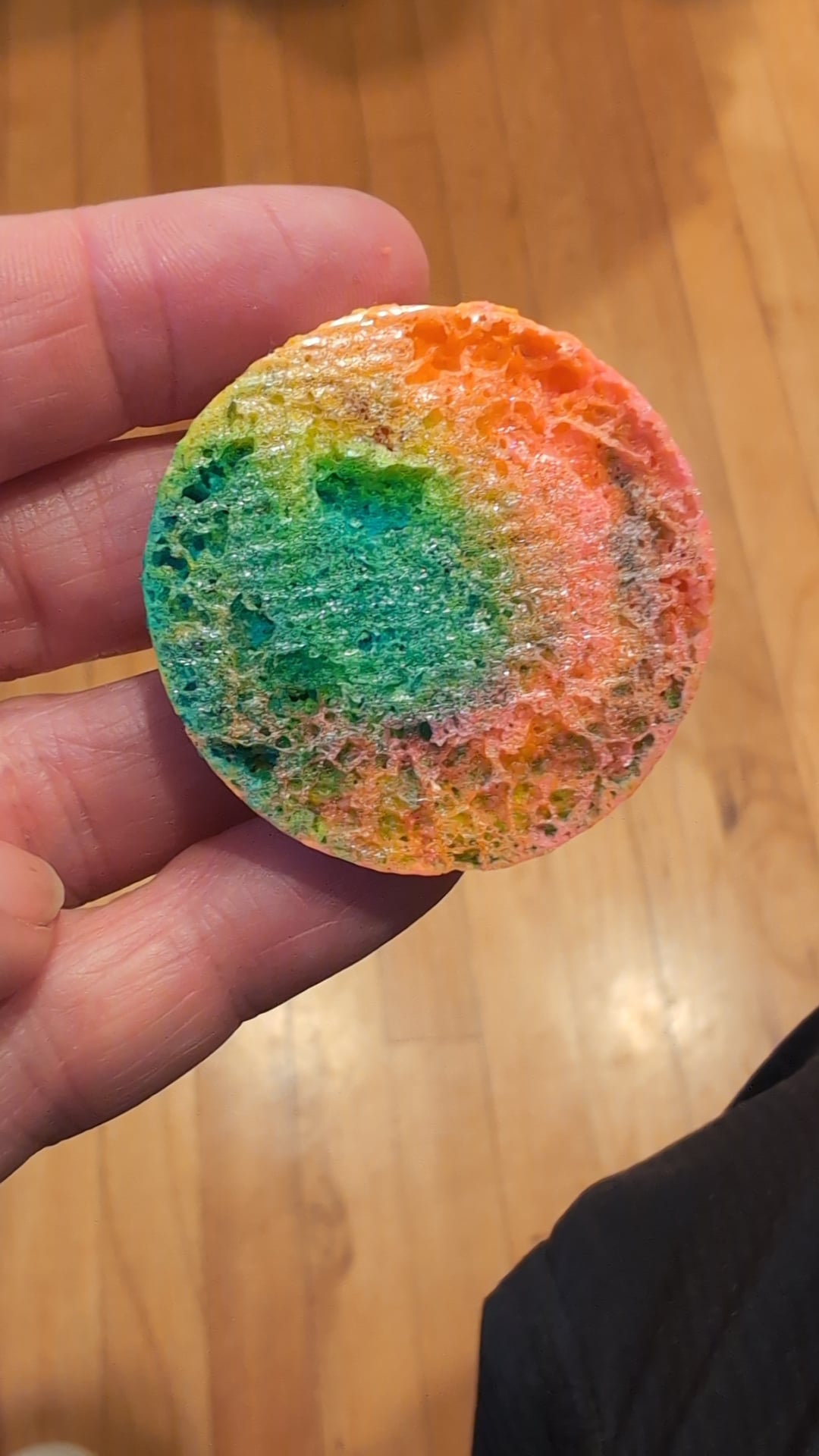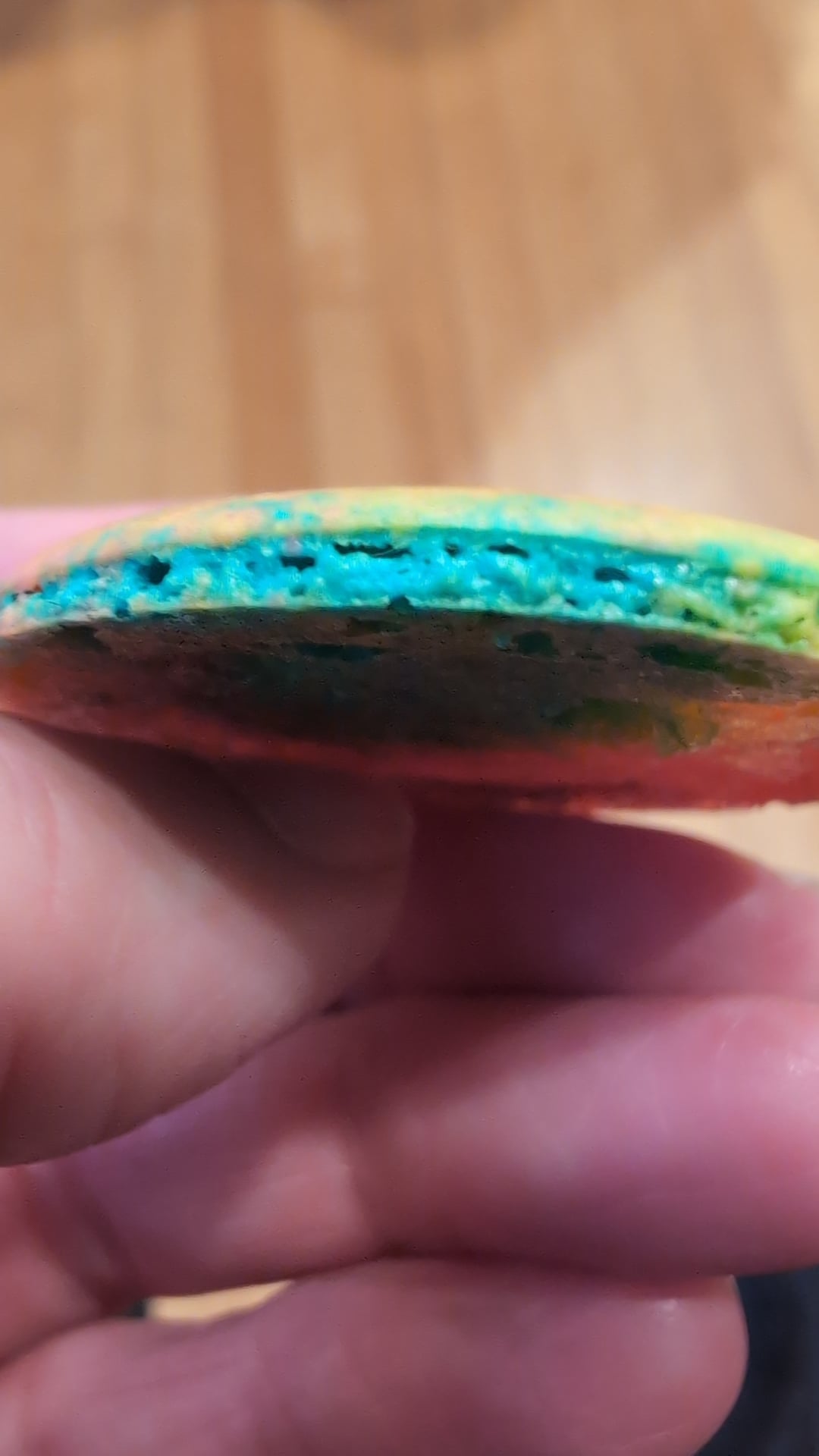


There have been a couple of posts about the size of feet and are they too small.
Feet are generated from the macaronage inside of the piped macaron. The attached pics show a shell with contrasting colored feet and an image of the under side with the same color as the feet.
Larger feet can sometimes indicate hollows as the macaronage came from inside the cookie to create them.
So…I tend to bake for feet on the smaller side to try to mitigate the hollows.
by Sugardoughnutbaker


3 Comments
I don’t understand what you’re trying to say.
Feet are caused by the shells rising when they bake. You let the surfaces of the piped shells become dry and tacky as the moisture on the surface evaporates. When you put them in the oven, the water underneath that tacky shell vaporizes and expands. Because the surface is tacky, it’s less permeable to the escaping steam. Instead of leaving through the top of the shell, like a cookie, the vapor pushes out around the bottom of the shells. The interior of the macaron expands, pushing the shells up as the vapor escapes around the bottom. As it cooks it becomes solid. The shell is lifted, making feet.
“Macaronage” is the process of reducing the air in the batter by folding it. It sounds like you think “macaronage” is a synonym for “macaron batter.”
Volume of your piped batter and strength of meringue.
Yours seems to have spread out too thinly. A full shell is naturally slightly concave on the bottom. Weak meringue disintegrate quicker, giving you less time to fold and deflate. It also doesn’t retail structure as well as strong meringue, so usually collapse after baking.
Oven temperature, if your baking temperature is too low you’ll get a very hollow feet, and gummy inside. Meaning you see a beautiful feet, but the inside falls off the shell.
Is this post written by AI?